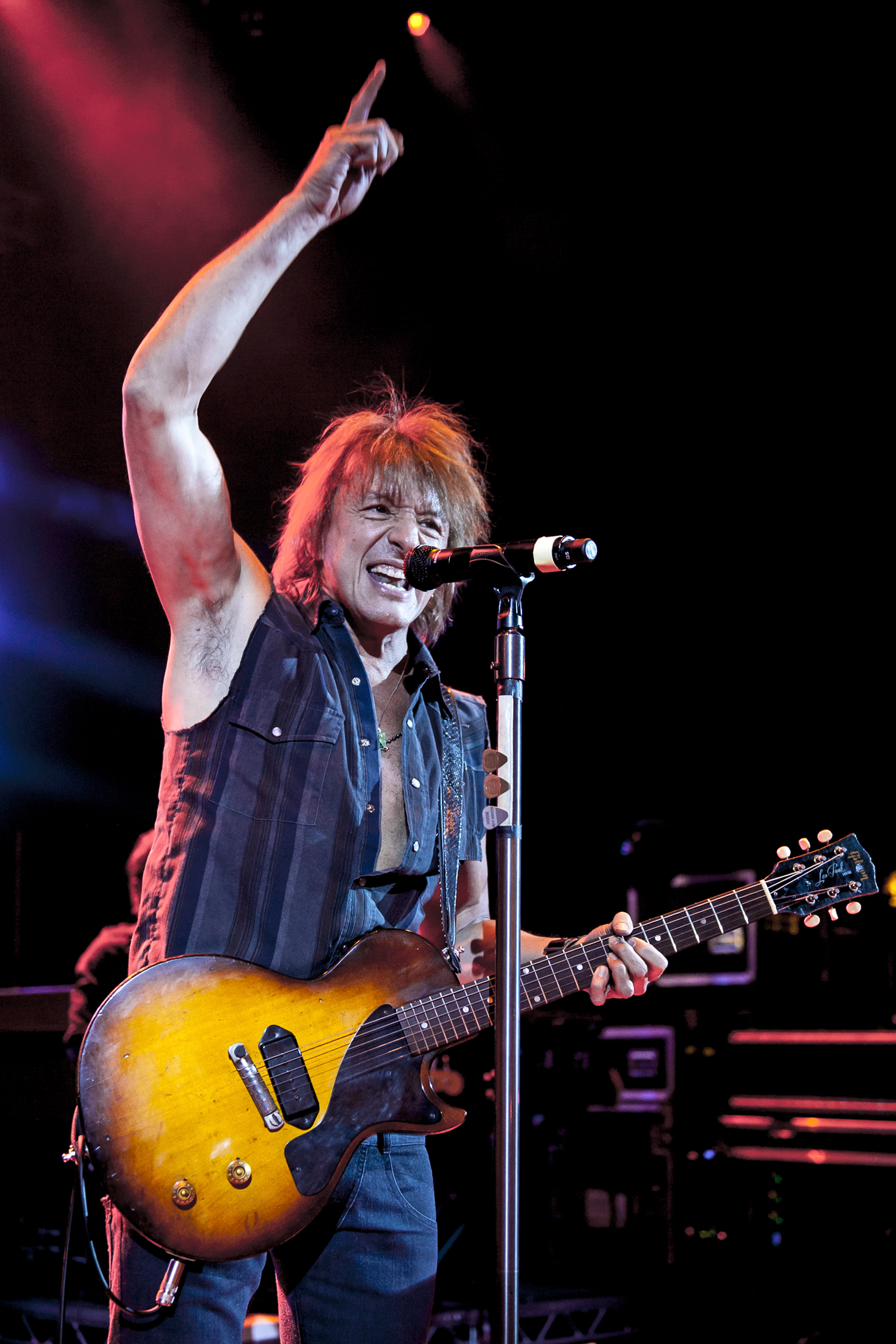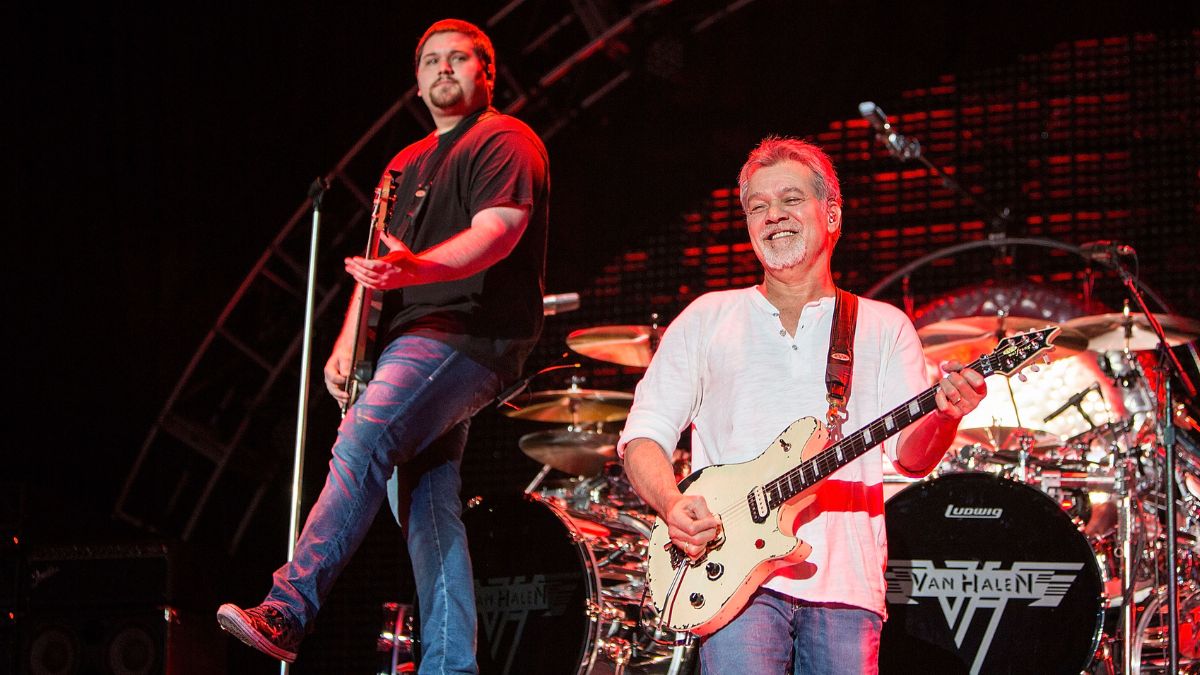Inquirer: Richie Sambora

FROM THE GW ARCHIVE: Originally published in Guitar World, January 2013.
What inspired you to pick up a guitar?
When I saw the Beatles on The Ed Sullivan Show in 1964, I knew I wanted to play guitar. I wanted to play lead after I saw Jimi Hendrix and Eric Clapton. I had an inclination toward self-expression, so that appealed to me.
What was your first guitar?
It was a Teisco! My dad used to work at a department store. We didn’t have a lot of money growing up and this was a refurb that someone never picked up. He paid, like, 10 bucks for it. I started teaching myself on that instrument. The damn thing wouldn’t stay in tune, so when I got into a band, I Pete Townshend-ed it. And that’s hard to do! Hendrix, at Monterey? He got it on the first pop. But when you try it yourself, it will slide all over, the body will break and shit will come up and hit you. It’s not easy.
What was the first song you learned?
The Allman Brothers Band’s “One Way Out.” I got the first lick and could change the chords and do it in rhythm. I think that was the basis for where I was goin’. Interestingly for me, I kinda learned ass-backward, taught myself by ear, then took theory classes and put them together.
All the latest guitar news, interviews, lessons, reviews, deals and more, direct to your inbox!
What do you recall about your first gig?
I was scared shitless, that’s for sure. I was playing a birthday party and we didn’t have enough material to get through the gig. But it was constructive and exciting.
Ever had a nightmare gig or embarrassing onstage moment?
We were opening for ZZ Top at Madison Square Garden. The first Bon Jovi record was in the can but hadn’t come out yet. We had no management. We were just brazen kids who wanted to play Madison Square Garden. We probably had no business doin’ it. Not that the band wasn’t ready, but we had no road crew, no infrastructure.
I knew this was a heavy blues-rock crowd, so I told the guys, “I’ll go out there and blow for about 60 seconds, then we’ll go into the first tune.” I hit the first chord and my Marshall blew up. I had a spare head, but it took about 45 seconds to switch and get the tubes warmed up. The crowd started chanting, “Z-Z-Top! Z-Z-Top!” Consequently, we played a 40-minute set in about 19 minutes. Gettin’ through moments like that is what shapes you as a pro.
What is your proudest moment as a player on your new solo album, Aftermath of the Lowdown?
The authenticity. I got to do a lot of individual stuff as a songwriter. Writing songs is powerful; it’s like checking in with yourself emotionally. But as a player it would be the extended jam songs where I got to burn as long as I wanted. I don’t hear a lot of bands play extended solos any more. You ask why I wanted to be a guitar player? To express myself with my instrument. I got to do that on songs like “Burn That Candle Down,” “Sugar Daddy,” “Learning How to Fly with a Broken Wing.” And those came straight off the floor, which adds to the authenticity.
What is your favorite piece of gear?
Oh, man. I have a pretty extensive collection of vintage stuff that I used on this record. It’s hard to pin down. I have a couple of ’59 Les Pauls. It’s gotta be one of those. But I also used a Broadcaster and a ’38 Martin OM28 acoustic. When you’re the boss, you want to be in charge of the color palette, and that entails a couple different amplifiers, a couple different guitars, a couple different pedals.
Do you have any advice for young players?
Number one, you have to cultivate the writing process; become a songwriter. You can be the best guitar player, but if you ain’t got a song to play to, you ain’t got nothin’. As a player, you gotta be proficient so you get to where what you’re hearing in your heart comes through your fingers. Good listening habits are very important. I took my first guitar lessons at 52 years old. Never stop learning.
